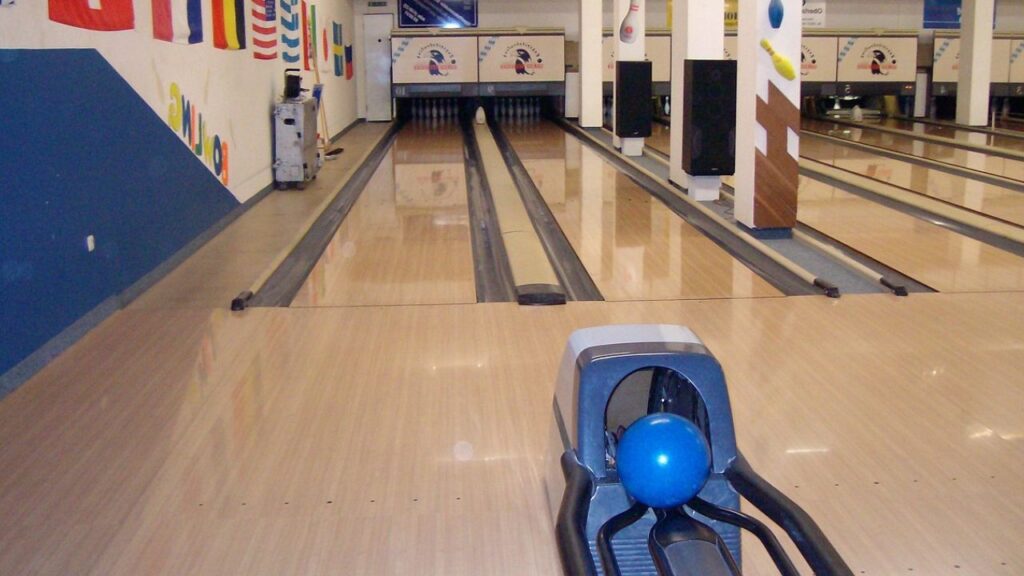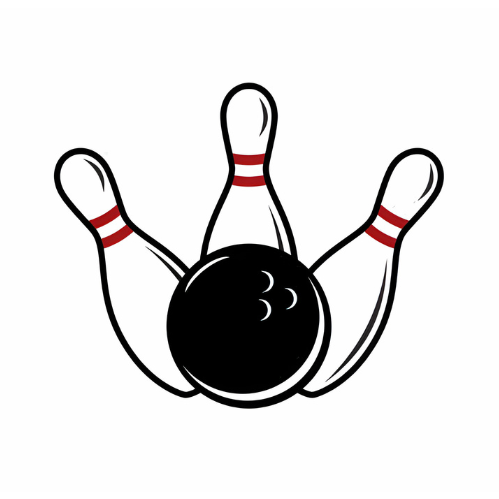A bowling alley layout typically consists of multiple lanes flanked by gutters, seating areas, and a scoring system. Essential facilities include ball return equipment, pinsetters, and a service desk.
Bowling enthusiasts and newcomers alike share an interest in the inner workings of a bowling alley. The standard layout is designed for both functionality and customer enjoyment. Multiple parallel lanes serve as the playing field, each equipped with automated pinsetters at the end and ball returns that funnel balls back to players.
Seating areas along the lanes provide space for bowlers to relax and prepare for their turn, while electronic scoreboards display ongoing game details. The service desk acts as the hub for shoe rentals and lane assignments, ensuring a smooth experience for guests. This layout is deliberately structured to optimize space for gameplay, equipment maintenance, and customer comfort, all vital to a successful bowling establishment.

Bowling Alley Evolution
The history of bowling alleys is fascinating. It all began in ancient Egypt. Small stone balls were rolled at objects to knock them down. This game evolved over centuries. By the middle ages, it was quite popular in Europe.
Modern bowling alleys are much different. They often include state-of-the-art technology. Features like electronic scoring and pinsetters keep the game moving. Neon lighting and laser shows add fun for all ages. Today’s alleys are lively social spots.
Design Foundations
A bowling alley layout is crucial for a great game experience. The lane specifications are standardized. Each lane is about 41.5 inches wide and 60 feet long. This ensures fair play for all bowlers. The approach area demands attention too. It lets players start their throw.
A good approach area is at least 15 feet long. It needs to be smooth and level. This gives bowlers the space to gain momentum. Many alleys also feature arrows and dots. They help players aim their throws. Think of the lane as a bowler’s canvas. It’s where skills and strikes shine!
Beyond The Lanes
Comfortable seating and spacious zones let fans enjoy the game. Chairs with clear views are a must. Sofas and tables offer a cozy spot.
High-tech scoring systems keep everyone excited. Screens above each lane show scores in real-time. Tablets and consoles allow easy control.
Atmospheric Essentials
Lighting sets the mood in a bowling alley. Bright, colorful lights can make the game more fun. It’s like being in another world. Special lighting effects, such as black lights, add a cool touch. They make white and neon colors glow.
In a good audio system, music and sounds are key. They should be clear and not too loud. Right sounds make the place lively. The sound of pins crashing is exciting. It is part of the game’s thrill.
Ancillary Space Utilization
Concession stands and bars play crucial roles in a bowling alley layout. Efficient design of these areas ensures quick service and positive customer experiences. Located near the lanes, they offer easy access for bowlers wanting snacks or drinks. Optimizing space usage with compact designs also helps to maximize revenue.
Party rooms and lounges add significant value to bowling alleys. These spaces cater to private events and casual gatherings. Comfortable seating and versatile layouts are key for these areas. They should also provide audio-visual equipment for entertainment purposes. Such thoughtful design enhances the overall experience for guests.
Integrating Technology
Automated pinsetters revolutionize bowling alleys, making manual resetting obsolete. Players witness efficiency with each strike or spare. Modern machinery resets pins quickly and accurately, thus ensuring a seamless bowling experience.
Interactive lane features enhance the bowling atmosphere. They offer customized visual effects and personal scoring systems. Bowlers enjoy games within games, such as themed environments or animations after each roll. This technology makes bowling fun for all ages.
FAQ
What Is A Standard Bowling Alley Layout?
A standard bowling alley layout includes a series of lanes, typically made of wood or synthetic materials, flanked by gutters. Each lane is 60 feet long from the foul line to the head pin, with seating and scoring areas behind the approach area.
How Many Lanes Are In A Typical Bowling Center?
Typical bowling centers have between 10 to 40 lanes. The number may vary based on the facility’s size, with smaller, boutique alleys offering fewer lanes and larger centers offering more.
What Features Are Included In Modern Bowling Alley Designs?
Modern bowling alley designs often incorporate advanced scoring systems, vibrant LED lighting, comfortable seating, and areas designated for concessions and socializing. Some include arcades or party rooms for diverse entertainment options.
Are Bowling Alley Dimensions Standardized?
Yes, the dimensions of a bowling alley are standardized. The Bowling Congress sets strict regulations for lane measurements, ensuring uniform playing conditions. The width of a lane is approximately 41 to 42 inches.
Conclusion
Wrapping up our exploration of bowling alley layouts, it’s clear design plays a key role in guest experience. From the approach area to the pin decks, each section matters. Remember, a well-thought-out space can boost enjoyment and attract more bowlers.
Ready to lace up your shoes and hit the lanes? Your perfect game awaits in a well-designed alley!

